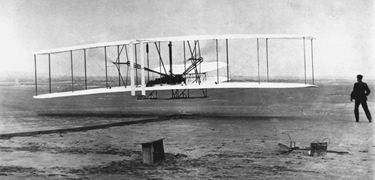

 The Accurate Reloading Forums
The Accurate Reloading Forums  THE ACCURATE RELOADING.COM FORUMS
THE ACCURATE RELOADING.COM FORUMS  Other Topics
Other Topics  Aviation
Aviation  Propeller aircraft capable of level flight faster than the speed of sound?
Propeller aircraft capable of level flight faster than the speed of sound?Go  | New  | Find  | Notify  | Tools  | Reply  |  |
| One of Us |
Perhaps the most interesting book on World War II aviation I have read is Len Deighton's Fighter. Following-up the information in that book, I attempted to locate information about the first propeller aircraft to be capable of level flight faster than the speed of sound. I have not been able to identify that aircraft. Please identify the aircraft, the date, and the pilot. If there has been no experimental or commercial aircraft having such speed/power, as best you can, please tell me why this has not yet occurred. You see, as someone unknowledgeable, I am unaware of any reason why propeller aircraft cannot be designed to be capable of level flight faster than the speed of sound. It's so simple to be wise. Just think of something stupid to say and then don't say it. Sam Levinson | ||
|
| One of Us |
The only thing preventing a pure propeller driven aircraft from flying faster than the speed of sound in level flight is the law of physics. While transonic speeds can be reached in a dive, in level flight it is impossible for a propeller driven aircraft to achieve a sustained speed above Mach 1. The topped claimed speed for a propeller aircraft was 623 mph or 0.83 Mach in an experimental aircraft called the Thunderscreech but that seems debatable. It obtained a lot of thrust from an afterburning turbine engine. The fastest pure propeller aircraft is a modified F8F Bearcat which clocked in at 528 mph or Mach 0.71. Propellers lose all their thrust (lift) at transonic speeds around 0.9 Mach. The leading edge shockwave destroys lift so it's as if the propeller is spinning in a vacuum. ___________________ Just Remember, We ALL Told You So. | |||
|
| One of Us |
Propellers thrust rather than pull like a screw that holds pieces of wood or metal together? In addition to that bit of not understanding, why does the loss of anything for the propeller act against or act with happen, but a jet engine can continue to use the air while the propeller cannot? I ask because the jet still forces air from one location to another. A rocket engine, as I understand it, acts against something it has stored. It is independent of air for power. I guess this is why rockets function beyond earth while propeller anything will just "sit there." It's so simple to be wise. Just think of something stupid to say and then don't say it. Sam Levinson | |||
|
| One of Us |
A propeller is nothing more than a vertical wing. Wings lose their lift efficiency as it nears Mach 1 due to the shock wave created by the leading edge. There's a whole bunch of math and physics behind this that I do not begin to understand known as transonic shockwave / boundary layer interactions. http://inpressco.com/wp-conten.../Paper120629-634.pdf ___________________ Just Remember, We ALL Told You So. | |||
|
| One of Us |
The air flow through a turbine engine has to be slowed to below Mach speed in order for the engine to operate. This is true even for the engines on the SR-71. Those pointy, cone shaped things in the intakes do this. Other aircraft, such as the F-14 use a sort of door in the intake to slow the entering air. porosonik. Vetting voters= racist. Vetting gun buyers= not racist. Got it? | |||
|
| One of Us |
The SR-71 engine movable cone design was to keep the shock wave out of the engine and ensure subsonic air was going to the compressor section. When the shock wave entered the engine it would “unstart”. SR-71 operation | |||
|
| Powered by Social Strata |
| Please Wait. Your request is being processed... |
|
 The Accurate Reloading Forums
The Accurate Reloading Forums  THE ACCURATE RELOADING.COM FORUMS
THE ACCURATE RELOADING.COM FORUMS  Other Topics
Other Topics  Aviation
Aviation  Propeller aircraft capable of level flight faster than the speed of sound?
Propeller aircraft capable of level flight faster than the speed of sound?

Visit our on-line store for AR Memorabilia

